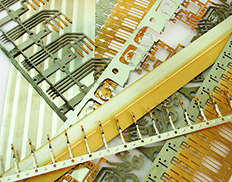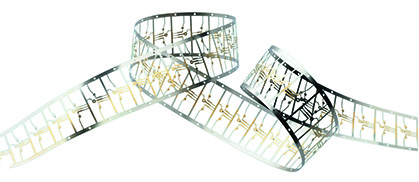Electroplating is the application of a metal coating to a metallic or other conducting surface by an electrochemical process. The article to be plated (the work) is used as the cathode (negative electrode) of an electrolysis cell through which a direct electric current is passed. The article is immersed in an aqueous solution (the bath) containing the required metal in an oxidized form, either as an aquated cation or as a complex ion. The anode is usually a bar of the metal being plated. During electrolysis metal is deposited on to the work and metal from the bar dissolves:
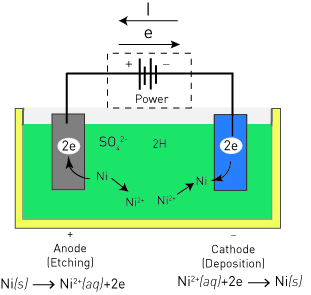
Faraday's laws of electrolysis govern the amount of metal deposited.
Articles are elecroplated
Depending on the size and geometry of the workpieces to be plated, different plating processes, including mass plating, rack plating and continuous plating may be adopted:
Mass or barrel plating
Mass plating is used for small workpieces to be plated in large quantities, such as nuts, bolts or connectors… The most widely used mass plating system is called barrel plating, where the workpieces are loaded into a plating barrel.
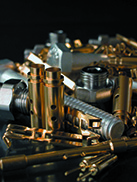
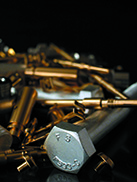
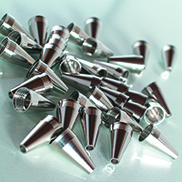
Rack or batch plating
Some workpieces cannot be mass plated because of their size, shape, or special features. Rack plating means workpieces mounted on a rack for the appropriate pretreatment plating and post-treatements. Racks are fixtures suitable for immersion in the plating solution.
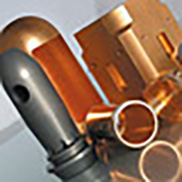
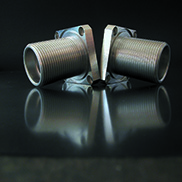
Continuous or ‘reel-to-reel’ plating
Continuous (or reel-to-reel) plating means the workpieces to be plated move continuously passing either one row or between two rows of anodes. Continuous plating is usually used for a workpiece of simple and uniform geometry, such as a metal strip or wire.
